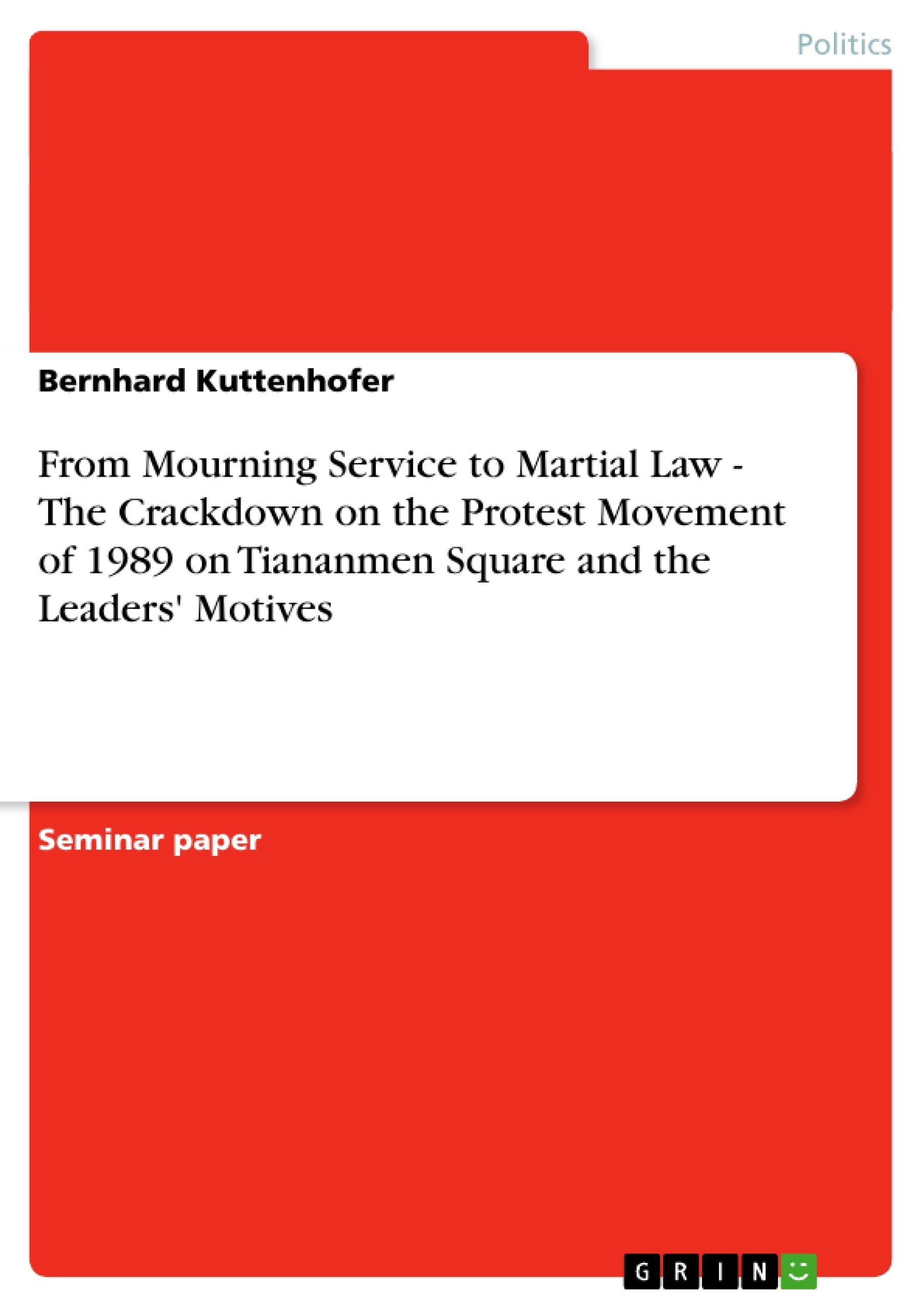When in the night from June 3 to June 4, 1989 armoured personnel carriers and main battle tanks entered Tiananmen Square in Beijing the Chinese People’s Liberation Army (PLA) brought the world’s largest and longest–lasting movement dedicated to democracy to a violent end. The numbers of confirmed deaths differ depending on the source. Today it is safe to assume that more than thousand people were killed in Beijing within several days. The West was shocked that the democracy movement that had met with wide response throughout the world ended in tragedy and bloodshed. The surprise about the crackdown was so big because the Chinese government had treated the demonstrators over a month obviously with remarkable tolerance1. Eventually, the declaration of martial law and the government's use of force against their own people by killing innocent and peacefully demonstrating students and citizens were disturbing and horrifying for the Western observers. [...]
Inhaltsverzeichnis (Table of Contents)
- A. Question:
- Why did the Chinese leaders decide to use force against the Tiananmen protesters in June 1989?
- B. Development and Testing of Hypotheses:
- Four Approaches to Explain the Leaders' Motives
- 1. Escalation Approach
- Aspects:
- "War of Symbols"
- Communication Problems between Students and Political Leaders
- Conclusion
- Political Struggle within the Politburo's Standing Committee
- Lack of Homogeneous Leadership
- Power Blockade within the Apex of Decision-Making
- Conclusion
- 2. Cleavage Approach
- Aspects:
- 3. Psychological Approach
- Aspects:
- Cultural Revolution Experience
- Punishment of "Spoilt Children"
- General Belief in Military Solutions
- Conclusion
- 4. "Behind-the-Scenes" Approach
- Aspects:
- Exploitation of Students by “a Small Group\"?
- Fear of Foreign Conspiracy
- Conclusion
- C. Findings:
- The correlative motives framework
- D. List of Works Cited
Zielsetzung und Themenschwerpunkte (Objectives and Key Themes)
This work seeks to understand the motives behind the Chinese leadership's decision to use force against the Tiananmen Square protesters in June 1989. It analyzes the events leading up to the crackdown and examines the reactions of the political leaders within the decision-making body.
- Escalation of the conflict between the Chinese leadership and the student protesters
- The role of symbolic maneuvers by the students and the leadership's response
- The influence of political power dynamics within the Chinese leadership
- The impact of the Cultural Revolution on the decision-making process
- The role of foreign influence and potential conspiracy theories
Zusammenfassung der Kapitel (Chapter Summaries)
Chapter A introduces the central question of the work: why did the Chinese leaders resort to force against the Tiananmen protesters? It describes the events leading up to the crackdown, highlighting the initial tolerance towards the demonstrations and the subsequent declaration of martial law. It also examines the contrasting public image of Deng Xiaoping and the brutality of the crackdown.
Chapter B outlines four different approaches to understanding the leaders' motives. It explores the concept of the “Escalation Approach”, analyzing the development of the protest movement as an escalating conflict between the leadership and the students. This chapter also delves into the "War of Symbols", examining the symbolic maneuvers employed by both sides and their escalating impact. The chapter also touches on political struggles within the Politburo and the potential influence of past events like the Cultural Revolution.
Schlüsselwörter (Keywords)
This work focuses on the Tiananmen Square protests, the Chinese leadership's decision-making process, the escalation of the conflict, symbolic maneuvers, the role of the Cultural Revolution, and potential foreign influence.
- Arbeit zitieren
- Bernhard Kuttenhofer (Autor:in), 2003, From Mourning Service to Martial Law - The Crackdown on the Protest Movement of 1989 on Tiananmen Square and the Leaders' Motives, München, GRIN Verlag, https://www.grin.com/document/22183



